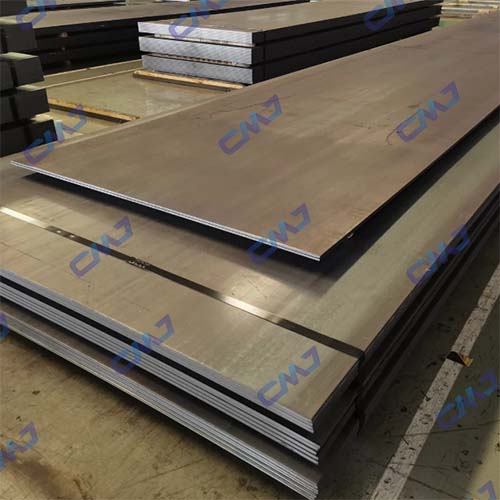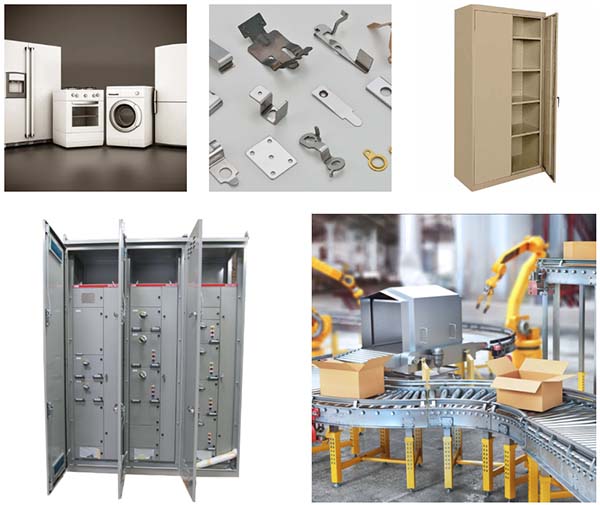Top 10 Steel Grades Used in International Construction Projects
654Explore the 10 most used steel plate grades in international construction. Compare A36, A572, A516, S355, EH36, and more for your project needs.
View detailsSearch the whole station
Q195 steel is one of the most commonly used low carbon steel grades in China, widely applied in the production of cold rolled steel coil and sheet. It is often compared with Q235 steel and referenced internationally through its equivalent grades such as ASTM A1008, JIS SPCC, and EN DC01.
This guide explains the Q195 steel equivalent in global standards, clarifies the difference between Q195 and Q235, and explores Q195 galvanized sheet applications— helping buyers and engineers make informed sourcing decisions for wholesale Q195 cold rolled steel plate supply.

When sourcing materials internationally, knowing the Q195 steel equivalent material helps ensure compatibility with local standards and consistent performance in forming or stamping operations. Q195 belongs to the GB/T700 standard and shares properties with several foreign grades, though exact equivalence requires verifying mechanical data.
| Standard | Equivalent Grade | Notes |
| ASTM (USA) | A1008 (Commercial Quality – CS Type A) | Closest in application and carbon content. However, A1008 is typically used for cold-formed steel, and detailed specs may differ. |
| JIS (Japan) | SPCC (Commercial Cold Rolled Steel) | SPCC and Q195 are commonly used interchangeably for low-strength, non-critical applications like stamping, household appliances, and automotive panels. |
| EN (Europe) | DC01 (EN 10130) | A cold-rolled low-carbon steel grade used for forming applications. Similar tensile strength and yield point to Q195. |
Note: The ASTM equivalent of Q195 steel is generally A1008 commercial quality, but properties should always be confirmed before substitution.
| Element | Q195 | SPCC | DC01 |
| C | ≤ 0.06% | ≤ 0.08% | ≤ 0.12% |
| Mn | ≤ 0.35% | ≤ 0.45% | ≤ 0.60% |
| P | ≤ 0.035% | ≤ 0.030% | ≤ 0.045% |
| S | ≤ 0.035% | ≤ 0.030% | ≤ 0.045% |
Q195 steel has the lowest carbon and manganese content, giving it superior ductility and easier cold forming.
| Property | Q195 | SPCC | DC01 |
| Yield Strength (MPa) | ≥195 | ≥205 | 140–280 |
| Tensile Strength (MPa) | 315–430 | 270–410 | 270–410 |
| Elongation (%) | ≥33 (t≤1.2mm) | ≥28 | 28–36 |
These Q195 steel properties make it ideal for drawing, stamping, and welding applications requiring smooth surface finish and dimensional accuracy.
Although both belong to the GB/T700 standard, Q195 vs Q235 steel differ significantly in chemical composition and mechanical strength.
| Element | Q195 (max) | Q235 (max) |
| C (Carbon) | 0.06–0.12% | 0.12–0.20% |
| Mn (Manganese) | 0.25–0.50% | 0.30–0.70% |
| Si (Silicon) | ≤0.30% | ≤0.30% |
| S, P (Impurities) | ≤0.050% | ≤0.045% |
Summary: Q195 steel has lower carbon and manganese content, which gives it better ductility but slightly lower strength.
| Property | Q195 | Q235 |
| Yield Strength (MPa) | ≥195 | ≥235 |
| Tensile Strength (MPa) | 315–430 | 375–500 |
| Elongation (%) | ≥33 | ≥26 |
Summary:

| Grade | Typical Uses |
| Q195 | Furniture parts, low-pressure pipelines, wire drawing, cold stamping |
| Q235 | Bridges, structural steel parts, heavy machinery components |
Conclusion: Choose Q195 if you prioritize cold formability and cost; choose Q235 for stronger mechanical performance.
Q195 galvanized steel sheet (or Q195 galvanized coil) is made by coating cold rolled Q195 steel with zinc via hot-dip or electro-galvanizing. The zinc coating enhances corrosion resistance and appearance.
| Industry | Use Case |
| Construction | Roofing sheets, wall cladding, ducting |
| HVAC | Air ducts, ventilation pipes |
| Furniture | Steel cabinets, enclosures, bed frames |
| Automotive | Inner panel structures, support frames |
| Agriculture | Grain silos, steel fencing, sheds |
Galvanized Q195 steel sheet combines the formability of low carbon steel with the durability of a zinc finish, making it ideal for both indoor and outdoor usage.
👉 Explore options: Galvanized Steel Plate Supplier
Both Q195 cold rolled coil and Q195 sheet refer to the same material in different packaging formats. Here’s a quick comparison:
| Format | Description | Use Case |
|---|---|---|
| Q195 steel coil | Continuous roll, convenient for mass processing | Slitting, stamping, roll forming |
| Q195 steel sheet | Flat cut-to-length plates | Custom fabrication or retail supply |
If you require large quantities, Q195 cold rolled steel coil is more efficient. For smaller or customized batches, opt for Q195 steel sheet.
Q195 steel balances cost, ductility, and weldability, making it ideal for general manufacturing and galvanized sheet applications.
At CJM Steel, we supply Q195 cold rolled steel plate and galvanized Q195 steel sheet for international wholesale and OEM use. All materials comply with ISO standards and are customizable in thickness and surface coating.
📩 Contact us for your next shipment or technical datasheet request:
Email: info@cjmstainlesssteel.com
WhatsApp: +86 181 9190 6640
Explore the 10 most used steel plate grades in international construction. Compare A36, A572, A516, S355, EH36, and more for your project needs.
View detailsDetailed 4140 steel technical information including chemical composition, mechanical properties, equivalent standards, machining, and welding guidelines.
View detailsLearn about ASTM A615 rebar: chemical composition, yield & tensile strength of Grades 40, 60, 75, common applications, ASTM A706 comparison, norma ASTM A615.
View detailsIn-depth technical guide to galvanized steel sheets: coating types (Z40–Z600), mechanical properties, international standards (ASTM, JIS, EN), grades from DX51D to S550GD, and typical industrial applications.
View details
HelloPlease log in